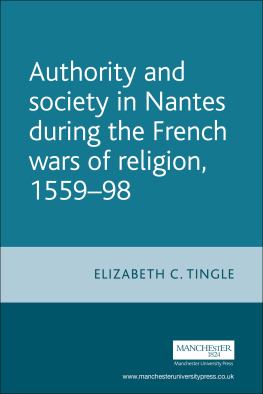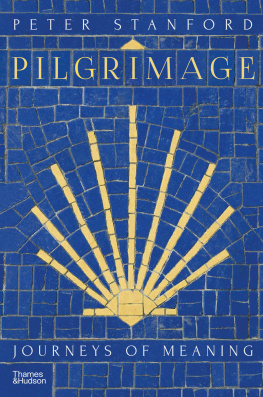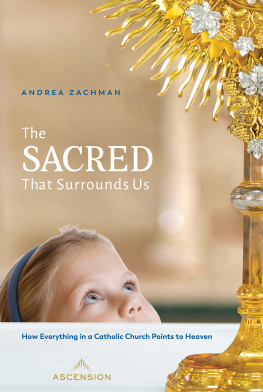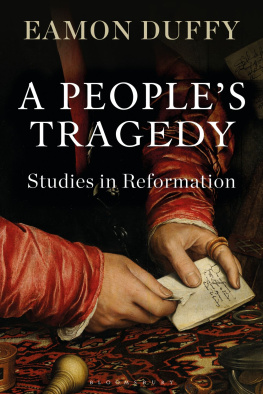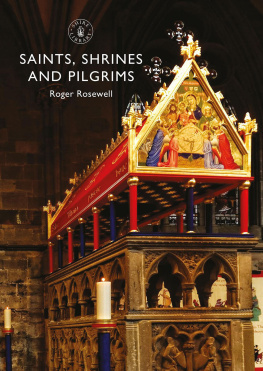For Katharine Tingle and William Davis
m. July 27, 2019
Acknowledgements
This work has been long in gestation and many debts of gratitude have been accumulated along the way. Ideas were refined during three conferences on pilgrimage. Two took place at the University of Chester in 2016 and 2017, the former kindly assisted by the Society for Renaissance Studies and the latter, sponsored by the Royal Historical Society. A third conference, in 2017, was sponsored by De Montfort University, Leicester. Thanks are due to Professor Philip Soergel for chairing the Leicester conference and adding his insight to the project. A major debt of gratitude is due to the Huntington Library in California for a research fellowship in December 2017, which allowed for the use of the wonderful resources of the library, particularly the Irish printed sources, and the space to think. Thanks are also due to Professor Soergel and Professor Virginia Reinburg, for useful comments on the work and to Erika Gaffney at MIP, for overseeing the publication.
I owe thanks to the staff of the British Library, Bibliothque Nationale de France, and the Archive-Library of the Cathedral of Santiago de Compostela, for their helpful assistance. I am particularly indebted to the staff of the French regional archives where I undertook much research for the book, especially the Archives Dpartementales of Aube, Aude, Calvados, Finistre, Gironde, Haute-Garonne, Loire-Atlantique, Manche, Rhne, Sarthe, Seine-Maritime, Vienne, and others. I was received with warmth, courtesy, and help everywhere, which greatly aided the project.
It is my family to whom I have the greatest debt. My husband, Martin, and our children, Katie and William, accompanied me at various times on my travels, in person and in spirit. Martin took most of the photographs for this book. I dedicate this book to my daughter and new son-in-law, Will, in the year of their marriage, a different sort of life journey.
Wymeswold, September 2019 |
List of Illustrations
Figures
Figure 1.1:
Map of Europe showing pilgrimage sites ( Martin Tingle)
Figure 3.1:
Pons hospital. Chapel doorway ( Martin Tingle)
Figure 3.2:
Pons hospital. Interior of hospital ( Martin Tingle)
Figure 3.3:
Pons hospital. Exterior from the south ( Martin Tingle)
Figure 3.4:
Hospital Real, Santiago de Compostela ( Martin Tingle)
Figure 4.1:
Cathedral of Santiago de Compostela. West Front ( Martin Tingle)
Figure 4.2:
Shrine of St. James, Santiago de Compostela. Nineteenth-century reliquary ( Martin Tingle)
Figure 4.3:
The Mont Saint-Michel, Normandy ( Martin Tingle)
Figure 4.4:
Plan of Station Island, Lough Derg, by Thomas Carve, 1666 (Source: Print from Thomas Carve, Lyra sive Anacephalaeosis Hibernica (Sulzbach, 1666). Copy in the Huntington Library, California)
Figure 5.1:
Image of St. Michael, Parish Church of Pleyber Christ, Finistre, seventeenth century? ( Martin Tingle)
Figure 5.2:
Pilgrim badge from Santiago de Compostela in the shape of a cockleshell ( Trustees of the British Museum)
Figure 5.3:
Jet statuette of St. James, from Santiago de Compostela, seventeenth century? ( Trustees of the British Museum)
Tables
Table 2.1:
Receptions of pilgrims in Santissima Trinit hostel of Rome during jubilee years.
Table 5.1:
St. Michael Confraternity membership of Notre-Dame de Vire, 16521691.
Abbreviations
A.D.
Archives Dpartementales.
B.N.F.
Bibliothque Nationale de France.
Bonnecaze
Nicolas de Caumont, Guillaume Manier, and Jean Bonnecaze, Chemins de Compostelle: Trois rcits de plerins 141717261748, ed. Valrie Dumeige (Paris: Cosmopole, 2009).
Ferreiro
Antonio Lpez Ferreiro, Historia de la Santa A. M. Iglesia de Santiago de Compostela, 11 vols. (Santiago: Seminario Conciliar Central, 18981911).
Huynes
Jean Huynes, Histoire gnrale de labbaye du Mont Saint-Michel au pril de la mer, ed. E. de Robillard de Beaurepaire, 2 vols. (Rouen: C. Mtrie, 1873).
Laffi
Domenico Laffi, A Journey to the West: The Diary of a Seventeenth-Century Pilgrim from Bologna to Santiago de Compostela, trans. James Hall (Leiden: Primavera, 1997).
Le Roy
Thomas Le Roy, Le livre de curieuses recherches du Mont Saint-Michel: Histoire du sanctuaire normand de lArchange, de sa fondation lpoque moderne, ed. Vincent Juhel (Caen: Socit des Antiquaires de Normandie, 2008).
Leslie ed.
Shane Leslie, ed., St. Patricks Purgatory: A Record from History and Literature (London: Burns Oates and Washbourne, 1932).
Manier
Guillaume Manier, Plerinage dun paysan picard Saint-Jacques de Compostelle au commencement du XVIIIe sicle, ed. Baron Bonnault dHouet (1890) (Le Mesnil sur lEstres: La Vague Verte, 2002).
Parga et al.
Luis Vzquez de Parga, Jos M. Lacarra, Juan Ura Ru, Las peregrinaciones a Santiago de Compostela, 3 vols. (Madrid: Consejo Superior de Investagaciones Cientficas, 19481949).
Chapter 1 Introduction: Long-Distance Pilgrimage in Early Modern Europe
I thought the age of pilgrimages had been at an end in all European nations, and that devotion contented itself with venerating its saints at homebut will you believe it, when I assure you, the number of pilgrims who come annually to pay their vows to Saint Michael at this Mount, are between 8 and 10,000? They are mostly peasants and men of mean occupations; but even among the noblesse there are those who are induced to make this journey from principles of piety.
When the English traveler William Wraxall visited the Mont Saint-Michel in Normandy in 1775, its status as a popular pilgrimage site was apparent even if visitors were fewer than at the beginning of the eighteenth century. He was witness to the final phase of a great upsurge in Counter-Reformation pilgrimage activity that occurred across Catholic Europe. Much of this pilgrimage was to local and regional shrines, often newly created. Another great destination was Rome, particularly during its Holy Years. Much less well known is the post-Reformation survival and refashioning of ancient, long-distance pilgrimages to shrines dedicated to early evangelists and confessor saints in northwestern Europe, such as Santiago de Compostela, the Mont Saint-Michel, and Lough Derg in Ireland. The focus of this book is on the revival of religious journeying to distant shrines dedicated to early medieval saints cults in the eastern Atlantic regions, that is, northern Spain, northern France, and the British Isles. The evolution of these spiritual journeys over time, the experiences of individual pilgrims, the relationship of pilgrimage to the formation of religious identity, and the role played by heroic voyages in reformed Catholicism, are central to this work.


